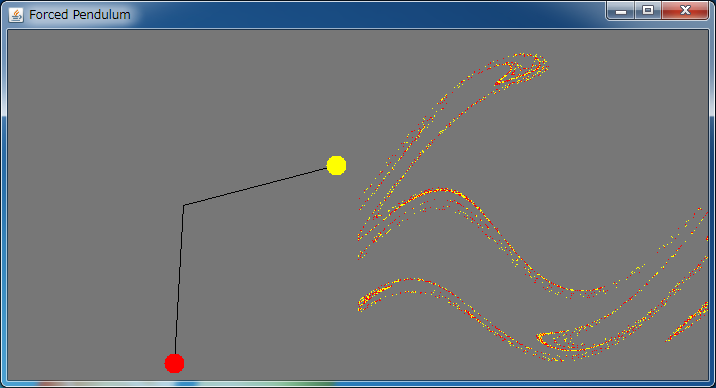Periodically Forced Pendulum

After downloading forced.jar, please execute it by double-clicking, or typing "java -jar forced.jar".
If the above application does not start, please install OpenJDK from adoptium.net.
The points which show the states of pendulums are plotted in the right field every period. If you wait about 10 minutes, you can see the ordered figure.